Judo
Judo (from Japanese 柔道, which means «gentle way») is a type of martial arts in which throws, painful techniques, and chokeholds are allowed. Painful techniques are permitted to be applied only on the hands of the opponent. Blows and some of the most traumatic techniques are studied only in the form of kata. In judo, dexterity is extremely important, and the use of force of the opponent is significant as well.
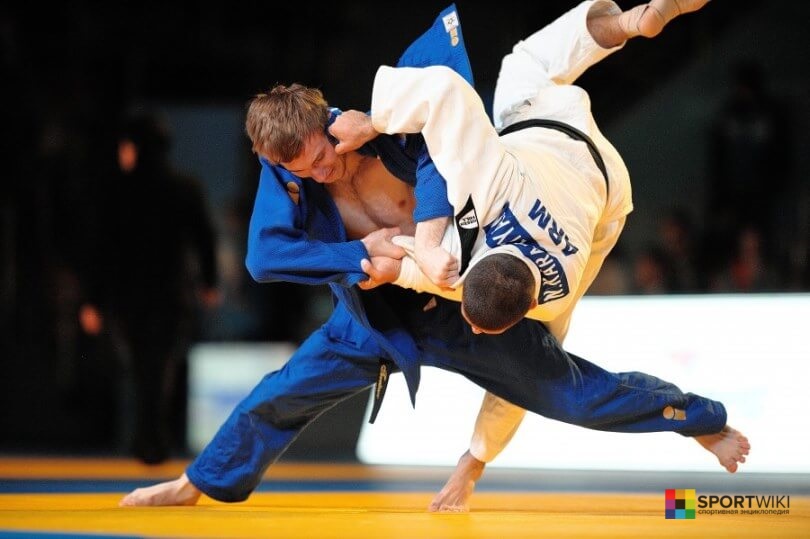
Judo is based on three main principles including mutual help and understanding for achieving great progress, the best use of body and spirit, and succumbing in order to win.
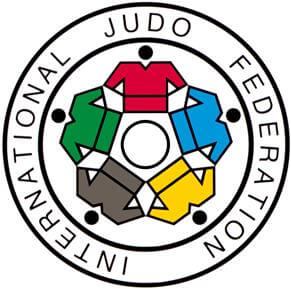
The International Judo Federation (IJF) was founded in July 1951. IJF sets rules for judo competitions and conducts championships at the continental and world levels.
History of Judo
According to the classification established in Japan, judo belongs to contemporary martial arts. It was founded by Professor Jigoro Kano. In 1882, Kano opened the first judo school in Tokyo. It was called "Kodokan". A year later, he developed a system of ranks, and in 1887, the judo technique was finally created. The first world championship was held in Tokyo in 1956. After that, competitions of such scale took place regularly and not only in Japan.
For many years, there have been no weight classes in judo. As the Japanese considered, the main thing was not the power, but the art of knowing how to perform the secret technique. But after the defeat of the Japanese in the fourth world championship, the rules were changed and there appeared weight classes. Since 1964, judo has been included in the Olympic Games program.
In 1980, the first women's world championship was held, and in 1992, judo competitions among women were included in the official program of the summer Olympic Games in Barcelona.
Since 2005, the European Judo Union has been organizing kata competitions. In 2008, the International Judo Federation held the first world kata championship in Paris.
Judo Rules
Apart from weight classes, there are the following age groups in judo:
- Minor age – girls and boys below 12.
- Pre-juvenile age – girls and boys below 14.
- Juvenile age – girls and boys below 17.
- Junior age – young men and women below 20.
- Senior – men and women below 23.
- Men and women. Veterans – after 30.
In judo, the fight begins in a standing position after "HAJIME" command. If the fight has to be stopped, then the "MATTE" command is announced. "SORO-MATTE" indicates the end of the fight.
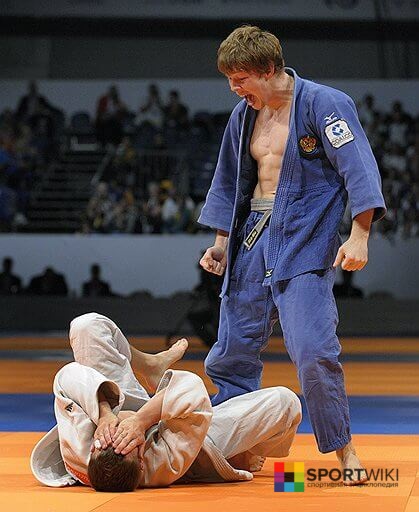
In order to win, the attacking fighter must throw the opponent on his back while being in a standing position and while being in the lying position, he should perform a painful technique, a chokehold, or retention (in 30 seconds).
Scores
«Ippon» is the highest judo score that means a pure victory. "Ippon" is given for performing the following techniques:
- when an attacking judoist throws an opponent on the bigger part of his back with considerable force and speed taking control over the attacked judoist;
- when the attacking judoist keeps his opponent in a hold position for 25 seconds;
- when an attacked judoist claps his hand, steps his foot two or more times or pronounces the word "MAITTA" (surrendering) as a result of hold, chokehold or painful technique of the attacking judoist.
«Wazari» is a half-victory which is given for performing the following techniques:
- an attacking judoist throws an opponent taking control over him, and one of the other three elements necessary for being given the IPPON score is missing in the throw;
- an attacking judoist holds up his opponent who cannot escape from the opponent’s hold for 20 seconds or more, but less than during 25 seconds.
When receiving the "wazari" score for the second time in one match, the referee announces that the judoist is the winner pronouncing "wazari avast ippon" command.
«Yuko» is given for performing the following techniques:
- after taking control of his rival, the attacking judoist throws the enemy on his side;
- the attacking judoist holds up his opponent who cannot escape from the holding position for 15 seconds and more but less than for 20 seconds.
«Koka» is given for carrying out the following techniques:
- the attacking judoist, taking control over his opponent, throws the rival on one shoulder, thigh (thighs) or buttocks;
- the attacking judoist holds his opponent who cannot escape from the holding position for 10 seconds or more but less than for 15 seconds.
Apart from receiving scores, the participants may be punished for the violation of the requirements of the Rules for competitions.
Judo Mats
Judo fights are held on special mats which consist of separate pieces of 1 m x 1 m x 4 cm or 2 m x 1 m x 4 cm that is made of polymeric materials. Judo mats include two zones having different colors. In the center of the judo mats, there is a square having a minimum size of 8 m by 8 m and the maximum size of 10 m by 10 m, which is called the contest area that consists of mats of the same color. The outer part of the judo mats is called a security area and it consists of mats of different colors and has the size of 3 meters around the perimeter. In the central part of the contest area, at a distance of 4 m from each other, there are white and blue stripes, about 10 cm wide and about 50 cm long. They indicate the places of the participants before the beginning of the fight and after it ends.
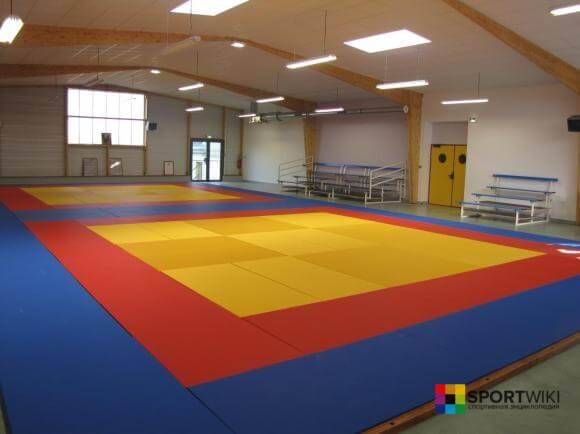
Judo Equipment
The uniform for judo is called judogi and it consists of three parts including a jacket, pants, and a belt. Usually, judogi is made of cotton and it should be blue for the judiost who is invited first, and it should be white for his opponent.
The jacket should have such length that can cover the hips and reach the wrists when they are placed along the body. The jacket should be wide enough to cover the right part with the left one by no less than 20 cm at the level of the lower part of the chest. Jacket sleeves should be down to the wrist and should spread minimum to a point located 5 cm above the wrist. There should be 10-15 cm space between the sleeve and the jacket throughout the length of the whole sleeve. Pants should be long enough to cover legs as much as possible, to the ankle, or at least to the point located 5 cm above it. Between the leg and pants, there should be a space of 10-15 cm along the entire length of the leg. A 4-5 cm wide belt should be wrapped twice over the jacket and tied at the waist level with a flat knot. The belt should be long enough to include the ends of 20-30 cm. If the uniform of the participant does not meet the requirements of the Rules, the managing referee or the moderator may require the participant to change the costume.
Refereeing
The refereeing of the fight is carried out by a board of referees:
- The referee. The duties of the referee include managing the fight, as well as the expression of his attitude to the actions of its participants. The referee makes a general decision on behalf of the whole board.
- Side referees. Aside referee must express his opinion if it is different from the decision of the main referee when announcing the scores based on assessing the techniques performed by the participants or imposing the punishment using the appropriate official gestures. Side referees must sit in opposite corners outside the contest area.
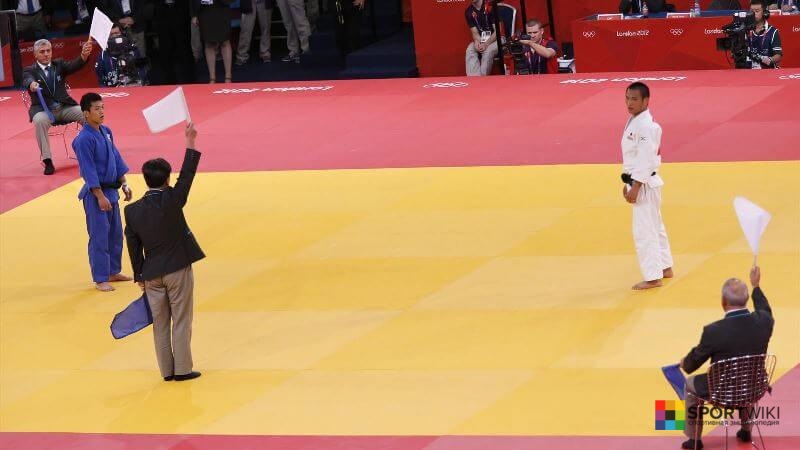
Judo Competitions
- Olympic Games.
- World Championship.
- Judo World Masters.
- «Grand Slam».
- «Grand Prix».
- Continental championship.
- Continental Open.
FAQ
Ju means "gentle", and do means "the way".
The purpose of Judo is to teach physical and mental discipline through the practice of attack and defense, leading to an understanding of the essence of the way.
Judo is Japanese martial art that does not include striking.

